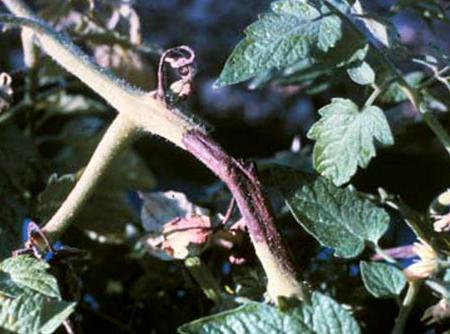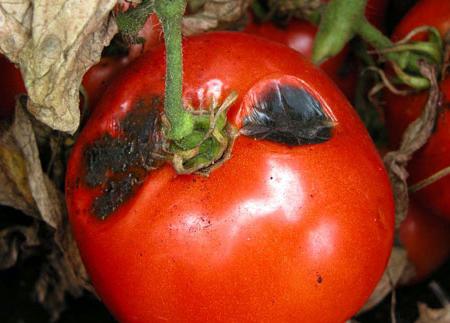Phytophthora mushrooms are a plant disease with at least forty species. Distributed in all parts of the world, with the exception of permafrost. However, even in the absence of natural vegetation, the disease can penetrate into greenhouses along with infected seeds or seedlings. It affects all plants of the nightshade family: potatoes, tomatoes, eggplant, pepper. Other cultures are also subject to it: strawberries, buckwheat, castor oil. The article describes in detail the fight against late blight on tomatoes.
How does the disease manifest
Phytophthora or late blight appears on all parts of the tomato bush. The first signal is the appearance of brown spots on the leaves, mainly along the edges. If dark streaks have formed on the stem, one should expect that soon the fruit will have brown or silver spots. At this stage, the fight against late blight on tomatoes no longer yields results, you can only try to save part of the crop by removing diseased bushes from the site. They need to be burned, and the remaining ones should be treated with folk remedies or chemicals. Most often, diseased fruits cannot be brought to ripening, they rot, and the bush gradually dries up. Phytophthora spores are extremely tenacious. They winter in soil at the lowest temperatures, remaining in the roots, scraps of stems and seeds of plants left after harvesting. In spring, at a temperature of 10 degrees Celsius, they begin to multiply actively; rain streams carry them from one bed to another. Moreover, spores are easily carried by the wind for many kilometers. A truly bacterial war in which it is very difficult to win.

Ways to combat late blight
Before processing tomatoes from late blight with antibacterial compounds, a number of proactive requirements must be observed. The main thing is not to plant tomatoes or other nightshade in the same place for two years in a row, and also not to alternate them with each other. Before planting seeds or seedlings, it is necessary to treat them with fungicides, for example, Bordeaux liquid or Hom. Do not use diseased seed. The fight against late blight on tomatoes is a constant care for the bushes. It is impossible to prevent thickening of plantings, excessive soil moisture. The lower leaves, touching the ground, as well as dried out shoots should be regularly removed. Fruits are better to pick up unripe and leave to ripen under a light canopy in dry crates or boxes. Now about how to spray tomatoes from late blight. The most famous remedy is Bordeaux fluid. Copper sulfate stains bushes and earth, and therefore, for aesthetic purposes, many people prefer its analogue “Khom” - copper chloroxide. True, experienced gardeners still consider the first tested composition more effective. At the same time, others say that copper sulfate is yesterday. Today, in specialized stores they offer a number of fungicides against phytophthora, among which the drugs Fitosporin and Ridomil have good reviews. It should be noted that with a single treatment the problem is not solved, it will have to be repeated for the growing season at least 3-4 times.

The fight against late blight on tomatoes with folk remedies
The composition of all chemicals to combat this fungus includes copper. Given this, some growers use the original method of prevention (but not treatment!) Of the disease. A copper wire of small diameter, cut into pieces 2-2.5 cm long, pierces the trunk of a tomato at the base. Reacting with the juice of the plant, the trace element spreads throughout the bush and protects it from damage by bacteria. Nobody guarantees 100% of the result, but you can try, there will be no harm. Whey is another folk remedy. Dilute 1-2 liters in a bucket of water and spray the bushes. The action is that the acidic environment on the surface of the plant prevents the growth of fungi. There is experience spraying with an aqueous solution of 5% iodine (10 ml per bucket of water). There are many other ways that are harmless to the plant and the health of consumers, and it is better to resort to them more often than abuse pesticides.